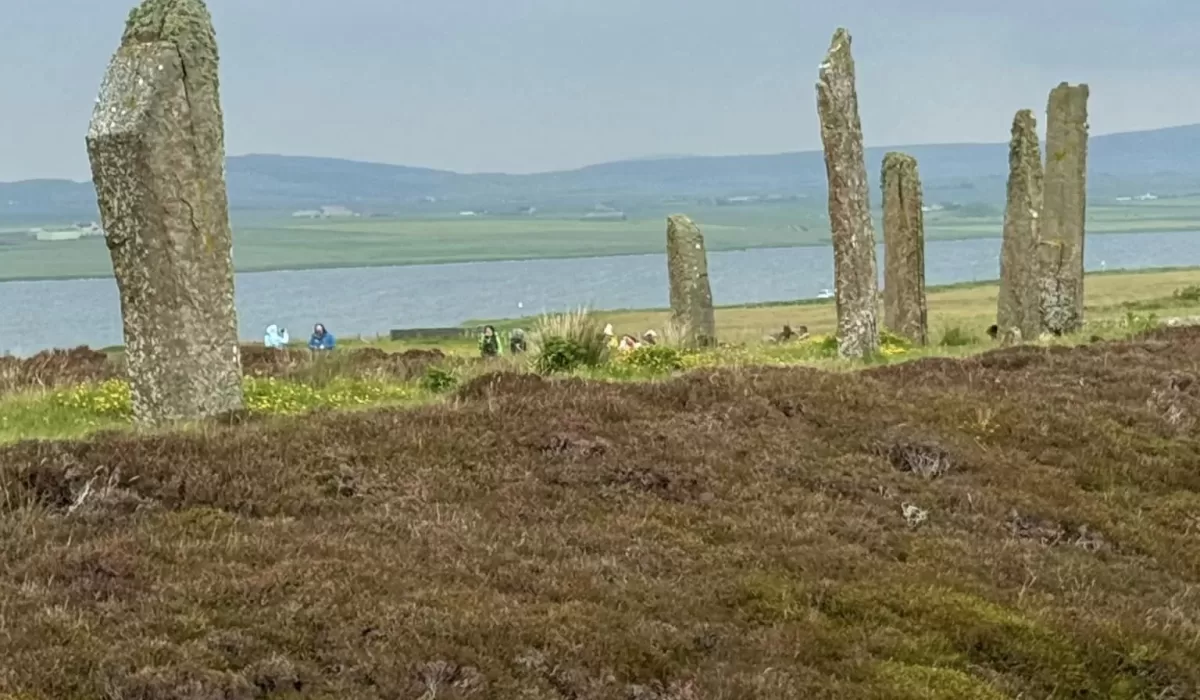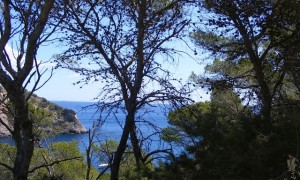by Sheryl Arredondo Jurries, guest blogger
Many people in Orkney have Viking and Scandinavian ancestry, and that heritage is evident. It feels differently here than on mainland Scotland, especially when you see the vast landscapes of windswept bleakness, Viking runes, burial cairns, rings of standing stones, and well-preserved ruins of brochs in ancient Neolithic villages. This part of Scotland has its own flag, Orcadian dialect, an even furniture, unique to the cold, windy, mostly treeless islands here.
Let me share with you some of the highlights.
Skara Brae
We visited a very cool Neolithic village called Skara Brae. This is an extremely old site, older than the pyramids of Egypt. It’s been dated to 3100 BC. It’s the best-preserved prehistoric village in Europe. What makes this settlement so fascinating is that some of the houses in the village still contain furniture, which were made entirely of stone, including beds, hearths, storage areas, and dressers. This is the only place where you can get a clear idea of what the interior of their homes were like some 4,500 years ago.
Later excavations revealed covered passages connecting the houses and workshops, which survived all these centuries in amazing condition. When you look down on these houses, you can almost picture the inhabitants. All that was missing was food, clothes, skins for blankets, and utensils.
Ring of Brogar
Up next is the Ring of Brodgar. This is a circle of standing stones and a huge henge, or ditch surrounding the stones. (It looked similar to what you see in the “Outlander” tv show.) There were 60 stones here at one time with 36 remaining and 27 still standing. They are up to 15 feet tall while others are simply broken off into stumps. They were roped off to keep people from getting too close.
We don’t know much about what the standing stones were used for, since Neolithic people did not have writing. It is generally thought that they had practical, ceremonial, or religious uses.
Maes Howe
On we drove to Maes Howe, a 5000-year-old round burial chamber. It appears as an enormous grassy mound (24 feet high and 110 feet in diameter.) This chamber is really exceptional, and it is considered an early architectural masterpiece of Neolithic people. It has a large central chamber, which is held up by gigantic slabs of stone, some weighing 30 tons. There are several chambers off to the sides of the central interior where they sealed off their dead.
The builders here positioned the chamber’s opening passageway so that at sunset on the shortest day of the year, the winter solstice, the setting sun shines right into the passageway of this burial chamber.
Stones of Stenness
This stone circle was my favorite, partly because I could actually lay my hands on them. The stones are in a 100-foot circle within a henge. There are only 4 of the original 12 stones remaining. The tallest is 17 feet. It felt very magical and it was utterly amazing to touch something so ancient!
Sheryl Arredondo Jurries is a former magazine editor and newspaper reporter. She has 2 children, 2 stepchildren, and a grand daughter. She had her husband Jim reside in Holland, Michigan.

















